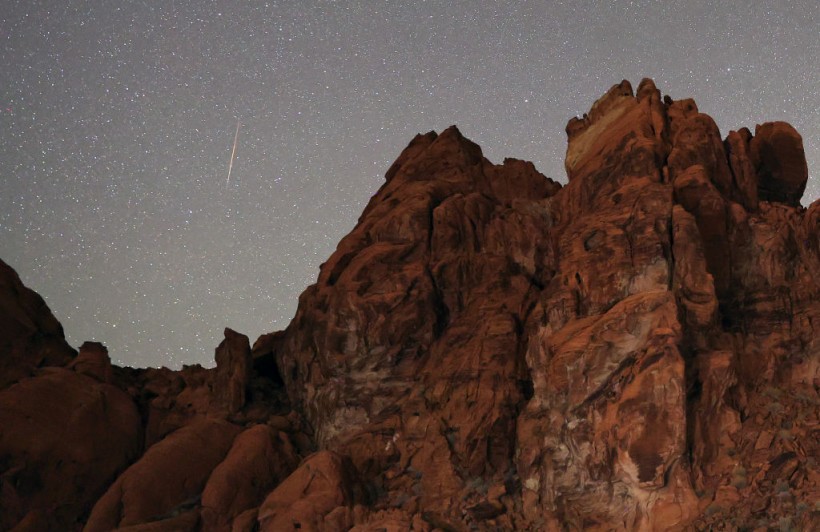(Photo : Photo by Ethan Miller/Getty Images)
Researchers discovered a fascinating intertwined tiny pattern, which had not been previously recognized prior analyzing a diamond within an old meteorite.
The 'Diablo Canyon' Meteorite
According to the experts, the construction, an overlapping combination of graphene with diamond, has distinctive features that might one day be utilized to build faster powering or revolutionary sorts of gadgets, Science Alert reported.
The diamond formations were trapped within the Canyon Diablo meteorite, which collided with Earth 50,000 years earlier and was found in Arizona in 1891.
The diamonds in this extraterrestrial aren't the type ordinary folks are used to seeing. The majority of documented diamonds were created about 90 miles (150 kilometers) below the Earth's atmosphere, when temperatures may reach over 2,000F. These diamonds' carbon molecules are organized in cubic patterns.
Furthermore, as per Flipboard, the diamonds within the Canyon Diablo crater, on the other hand, are classified as lonsdaleite - dubbed for British crystallographer Dame Kathleen Lonsdale, the very initial female lecturer at University College London - that feature a hexagonal crystal form.
Under severe compression and conditions do these diamonds emerge. While researchers have effectively created lonsdaleite in the laboratory, employing gunpowder and pressurized air to launch graphite disks 15,000 mph (24,100 km/h) into a barrier, lonsdaleite is normally generated just when asteroids collide with Earth at extremely rapid rates.
The scientists determined something unusual when researching lonsdaleite in the meteorite. Rather than the expected pristine hexagonal patterns, the scientists determined expansion of different carbon-based substance called graphene interacting with the diamond.
These propagules are classified as diaphites, and they occur in a fascinating multilayered structure within the meteorite. There are layering flaws among these strata, which means the strands do not line up correctly, according to the scientists in a report released by UCL News.
Also read: State of Emergency Declared: Oak Fire in California Remains Uncontainable
Diamond Crystal from 50,000 Years Ago
Discovering diaphites in chondrite lonsdaleite shows that this substance may be located in that similar carbonaceous matter, which implies that it might be easily accessible for usage as a supply, the authors said in the paper.
The discovery additionally provides the experts with a deeper understanding of the conditions of stress plus heating rate required to build the framework.
Graphene is a one-atom-thick layer of carbon that is organized in hexagons. Whilst study on this substance is underway, it offers a wide range of possible uses.
While Nation World News claim that this might someday be utilized for further aimed prescription drugs, smaller devices with lightning-fast battery pack bandwidths, or quicker and bendier innovation since it is as luminous as a feather and as sturdy as a diamond; translucent and immensely absorbent; and 1 million times smaller than the diameter hair, according to the investigators.
And it seems that these graphene propagules have been uncovered within meteorites, scientists may gain of how they arise - and hence how to produce them in the laboratory.
As per Christoph Salzmann, a chemist at University College London and co-author of a document outlining the studies, via managed coating expansion of frameworks, it ought to be feasible to create resources which are both ultra-hard and pliable, and have extendable electromagnetic qualities ranging from a circuit to an insulator.
The unusual innovative solutions were detailed in the journal Proceedings of the National Academy of Sciences on July 22.
Related article: Oldest Galaxy Ever Seen? The James Webb Space Telescope Finds Galaxy from 13.5 Billion Years Ago
© 2024 NatureWorldNews.com All rights reserved. Do not reproduce without permission.






